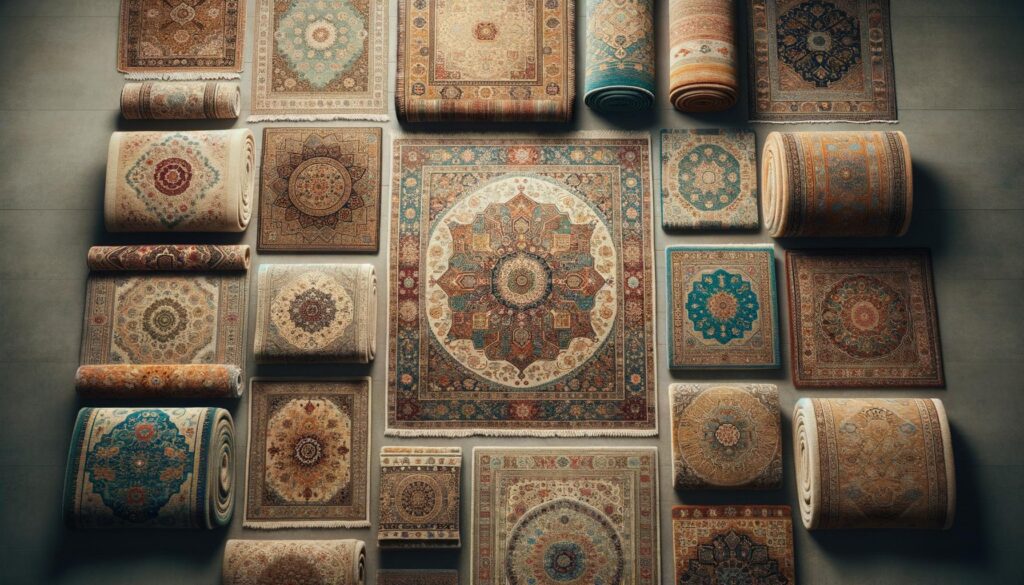A Comprehensive Guide to Buying Vintage Carpets and Rugs

Understanding the Appeal of Vintage Carpets
Vintage carpets and rugs possess a charm and character that is often missing from modern reproductions. Their appeal lies not only in their aesthetic value but also in their historical significance. Many vintage rugs tell a story, representing the culture and art of past generations. Handcrafted with traditional techniques, these pieces often exhibit unique patterns and colors that can’t be replicated in mass production. By incorporating a vintage rug into your home, you add a touch of elegance and history that can transform your space. Vintage rugs are also known for their durability, as they were made to withstand time and wear.
Identifying Authentic Vintage Rugs
When diving into the world of vintage rugs, distinguishing between authentic and replicas is crucial. An authentic vintage rug will show signs of age, such as slight fraying or fading, which should enhance its character rather than diminish its value. Consider these key identifiers when examining potential purchases:
- Material: Vintage rugs are typically made from natural fibers like wool, cotton, or silk. The texture should feel rich and substantial.
- Design: Look for irregularities in the pattern, as this is a hallmark of handwoven rugs rather than machine-made ones.
- Age: Research the rug’s origin to verify its age, as authentic vintage rugs are usually 20-100 years old.
- Provenance: A reputable dealer should provide information about the rug’s history and origin. This can include the region where it was produced and its previous owners.
Always ensure you’re purchasing from a trusted source to avoid counterfeits.
Evaluating the Condition and Value
The condition of a vintage rug significantly impacts its value. While some wear is expected and adds to its charm, excessive damage can decrease its worth. Assess the following elements when determining a rug’s condition:
- Pile: The rug’s pile should be even, without bald spots or excessive wear.
- Edges and Fringe: Check for intact edges and fringes, as damaged areas may require restoration, affecting both appearance and value.
- Colors and Patterns: Ensure colors are vibrant and patterns are well-defined, but expect natural fading due to age and exposure to sunlight.
When evaluating the value, compare similar pieces from the same era and region to get a sense of pricing trends. Consult with experts or appraisers if you’re uncertain about a rug’s worth.
Caring for Your Vintage Carpet
Proper care and maintenance are essential to preserve the beauty and longevity of your vintage carpet. Here are some tips to help you maintain your investment:
- Regular Cleaning: Vacuum gently on a low setting to remove dust and dirt. Avoid using beater bars as they can damage delicate fibers.
- Rotation: Rotate your rug every few months to ensure even wear, especially in high-traffic areas.
- Professional Cleaning: Consider professional cleaning every few years to remove deep-seated dirt and refresh colors.
- Handling Stains: Blot any spills immediately using a clean, dry cloth. Avoid harsh chemicals and seek advice from a professional for tough stains.
With the right care, your vintage rug can continue to be a stunning focal point in your home for many years.
Where to Buy Vintage Carpets and Rugs
Finding the right place to purchase vintage carpets and rugs is as important as choosing the right piece. There are several options to consider:
- Specialty Shops: These shops often have a curated selection and knowledgeable staff who can offer insights into the rugs’ origins and craftsmanship.
- Online Marketplaces: Reputable online platforms can offer extensive selections, but ensure you read reviews and verify the seller’s credentials.
- Auctions: Auctions are an exciting way to find rare pieces, but they require a careful assessment of condition and authenticity.
- Estate Sales: Estate sales can be treasure troves for vintage rugs, often available at competitive prices.
Wherever you choose to purchase your vintage rug, prioritize authenticity and quality to ensure your investment is worthwhile.
Conclusion
Investing in a vintage carpet or rug can be a rewarding experience, offering both aesthetic pleasure and a touch of history to your home. By understanding their appeal, evaluating authenticity and condition, and knowing where to buy, you can make an informed decision that enhances your living space. With diligent care, your vintage rug will remain a cherished part of your decor for years to come.
